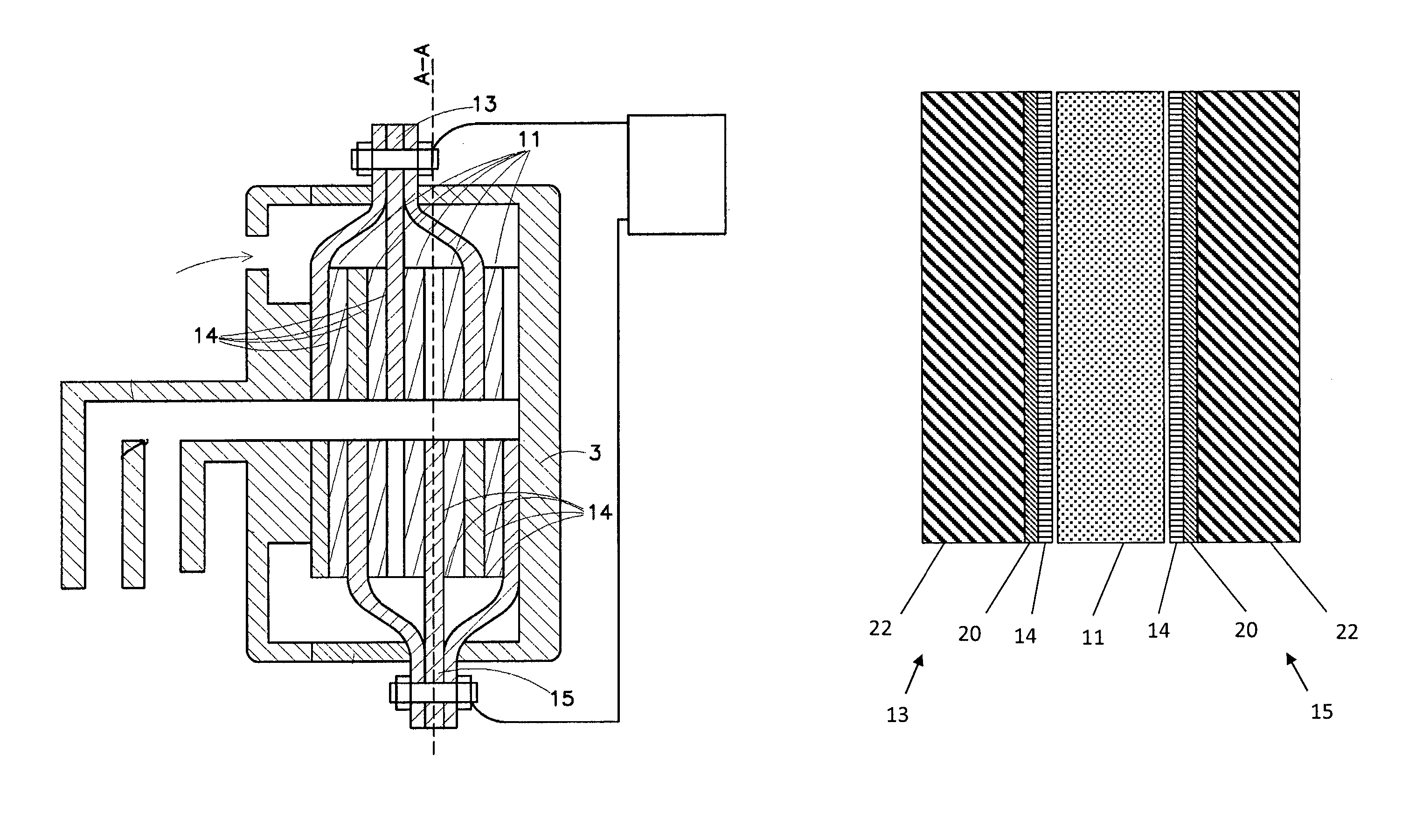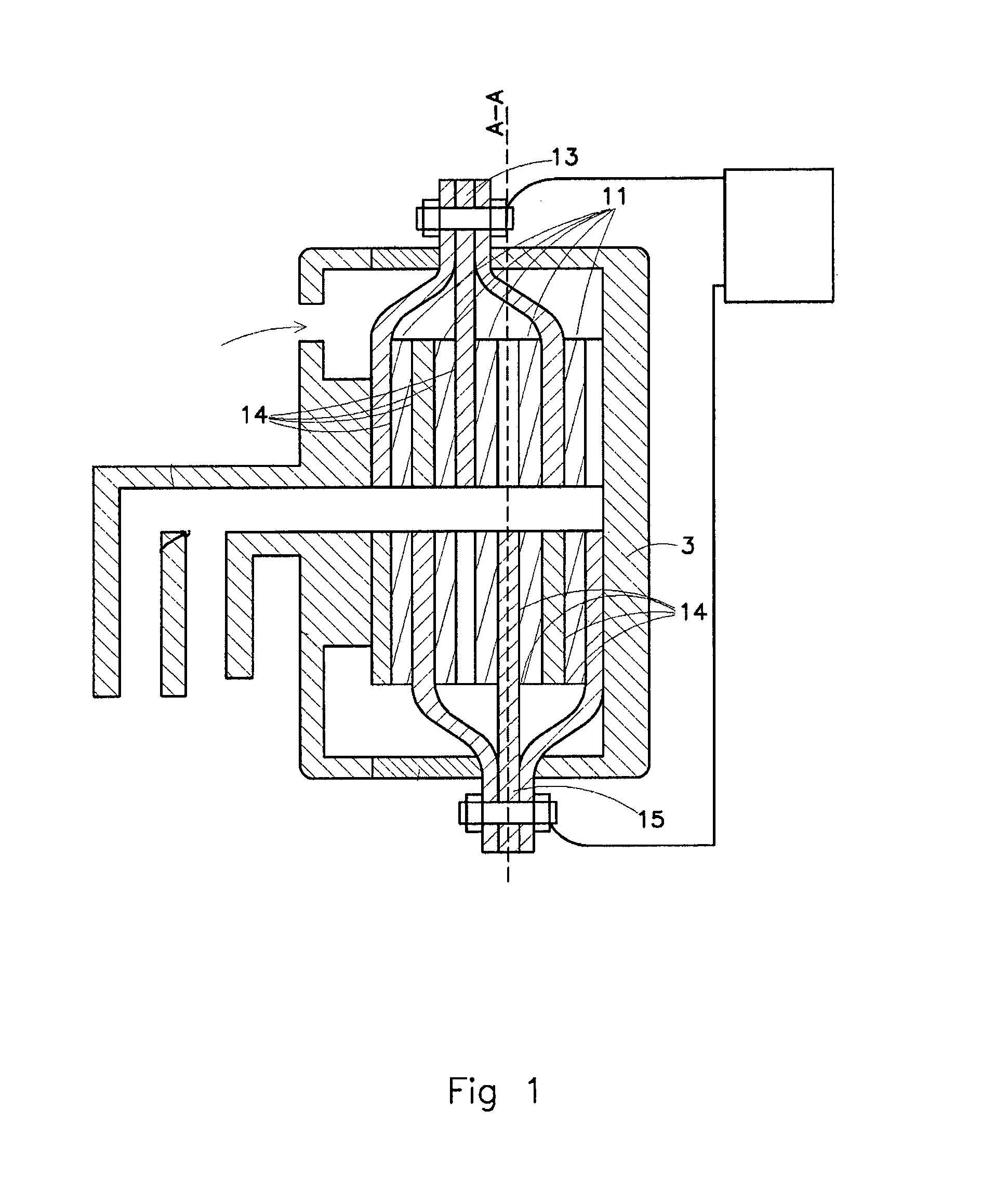Water purification device
a water purification device and water technology, applied in the direction of carbon-silicon compound conductors, conductive materials, electrodes, etc., can solve the problems of limited life of ion-exchange resin and/or the required volume of resin for the production of soft water, and the ion-exchange material used in these methods requires regular regeneration, so as to improve the ion storage capacity of electrodes, increase the thickness of ftc stacks, and improve the ion storage capacity of electrod
- Summary
- Abstract
- Description
- Claims
- Application Information
AI Technical Summary
Benefits of technology
Problems solved by technology
Method used
Image
Examples
example 1
[0074]This example relates to the preparation of the carbon coating paste.
[0075]A formulation for 1 kg of activated carbon coating paste is given below. The level of polyelectrolyte in the paste depends on the required levels in the electrode. In the example below the polyelectrolyte level in the anode and cathode are respectively 14% w and 11% w.
[0076]For 1 kg of dry coating[0077]140 g of polyethylenimine (PEI) branched Mw: 25000 (ex Sigma)[0078]800 g of carbon A supra EUR (ex Norit)[0079]60 g of binder: Fastbond 7434 (3M, 115 g of 52% in water)[0080]2 liters of demineralised water
[0081]The ingredients may be pre-dissolved in part of the water before mixing.
[0082]For 1 kilogram of dry coating[0083]110 g of poly(4-styrenesulfonate) Mw: 70000 (ex Sigma)[0084]810 g of carbon A supra EUR (Norit).[0085]80 g of binder: Fastbond 7434 (3M, 115 g of 52% in water)[0086]2 liters of demineralised water
[0087]The ingredients may be pre-dissolved in part of the water before mixing.
[00...
example 2
[0090]This example relates to the manufacture of carbon coated electrodes and the comparison of the capacities of the electrodes according to an embodiment of the invention to the capacities of conventional electrodes.
[0091]An anionic coated current collector was prepared by applying the wet anode paste according to example 1 onto a graphite sheet at room temperature with a speed of 30-60 cm / min and a thickness of about 0.5 mm. The sheet with the wet coating was dried in approximately 30 min at 70° C. In the example, the coating is applied on one side of the graphite sheet.
[0092]The cathode is material PACMM-203 (ex Material Methods) activated with sodium chloride. The reference carbon layer for both anode and cathode is material PACMM-203 activated with sodium chloride. The carbon electrode (material PACMM-203) has been activated according to the following protocol:[0093]Soaking carbon electrodes 2 hours in a 50% aqueous solution of ethanol.[0094]Soaking carbon electrodes 4 hours i...
PUM
 Login to View More
Login to View More Abstract
Description
Claims
Application Information
 Login to View More
Login to View More - R&D
- Intellectual Property
- Life Sciences
- Materials
- Tech Scout
- Unparalleled Data Quality
- Higher Quality Content
- 60% Fewer Hallucinations
Browse by: Latest US Patents, China's latest patents, Technical Efficacy Thesaurus, Application Domain, Technology Topic, Popular Technical Reports.
© 2025 PatSnap. All rights reserved.Legal|Privacy policy|Modern Slavery Act Transparency Statement|Sitemap|About US| Contact US: help@patsnap.com



